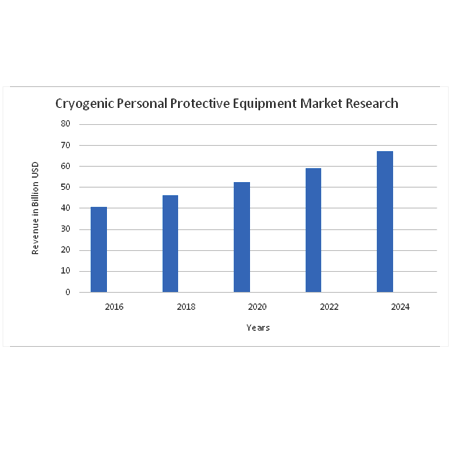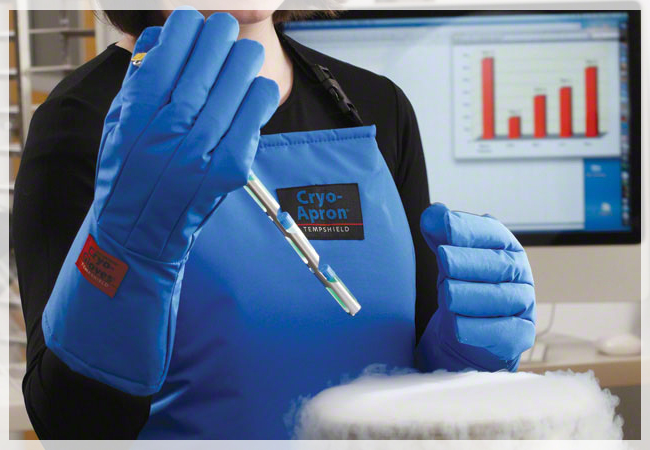Currency
February 28, 2018

NEW YORK, Feb. 27, 2018 (GLOBE NEWSWIRE) -- Global Cryogenic Personal Protective Equipment Market is estimated to reach $67.07 billion by 2024; growing at a CAGR of 6.4% between 2016 and 2024 Says, Profshare Market Research. The word “cryogenic” means “producing at low temperatures”. Cryogenic liquids have boiling points below -150°C (- 238°F).There are different type of hazards while working with cryogenic liquids e.g. Extreme Cold Hazard, Asphyxiation Hazard, Toxic Hazards.
Cold vapours and gases associated with cryogenic liquids can produce adverse effects on the skin similar to a thermal burn. Brief exposures that would not affect skin on the face or hands but can damage delicate tissues such as the eyes. Exposure of the skin for a long period of time or contact with cold surfaces can cause frost bite. The skin appears waxy yellow. There is no initial pain, but there is intense pain when frozen tissue defrost. The gas formed by cryogenic liquids is very cold and usually heavier than air. This cold, heavy gas get accumulate near the floor. The gas is non-toxic but it displaces air. When there is not enough air or oxygen, as phyxiation and death can occur. Each of these gas can cause serious health effects. For example, liquid carbon monoxide can release carbon monoxide gas, which can cause death. Uncovered skin can stick to metal cooled by cryogenic liquids. The skin can then tear when pulled away. Prolonged breathing of extremely cold air can cause damage of the lungs.

In order to avoid these hazards, it is very important to choose the right personal protective equipment for a particular job. By type, the global personal protective equipment market is segmented into hands & arm protection, protective clothing, foot & leg protection, respiratory protection, eye & face protection, head protection, and others. To avoid skin contact wear knee length laboratory coat or apron of a non-woven material such as leather. Use shoes with tops high enough to be covered by pants. Wear loose fitting, insulated gloves when handling anything that may have been in contact with a cryogenic liquid. To protect eyes and face wear safety glasses and helmets. Avoid breathing of harmful gases by using respirators.
Cold vapours and gases associated with cryogenic liquids can produce adverse effects on the skin similar to a thermal burn. Brief exposures that would not affect skin on the face or hands but can damage delicate tissues such as the eyes. Exposure of the skin for a long period of time or contact with cold surfaces can cause frost bite. The skin appears waxy yellow. There is no initial pain, but there is intense pain when frozen tissue defrost. The gas formed by cryogenic liquids is very cold and usually heavier than air. This cold, heavy gas get accumulate near the floor. The gas is non-toxic but it displaces air. When there is not enough air or oxygen, as phyxiation and death can occur. Each of these gas can cause serious health effects. For example, liquid carbon monoxide can release carbon monoxide gas, which can cause death. Uncovered skin can stick to metal cooled by cryogenic liquids. The skin can then tear when pulled away. Prolonged breathing of extremely cold air can cause damage of the lungs.

In order to avoid these hazards, it is very important to choose the right personal protective equipment for a particular job. By type, the global personal protective equipment market is segmented into hands & arm protection, protective clothing, foot & leg protection, respiratory protection, eye & face protection, head protection, and others. To avoid skin contact wear knee length laboratory coat or apron of a non-woven material such as leather. Use shoes with tops high enough to be covered by pants. Wear loose fitting, insulated gloves when handling anything that may have been in contact with a cryogenic liquid. To protect eyes and face wear safety glasses and helmets. Avoid breathing of harmful gases by using respirators.









